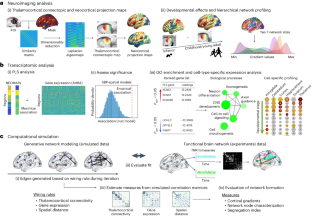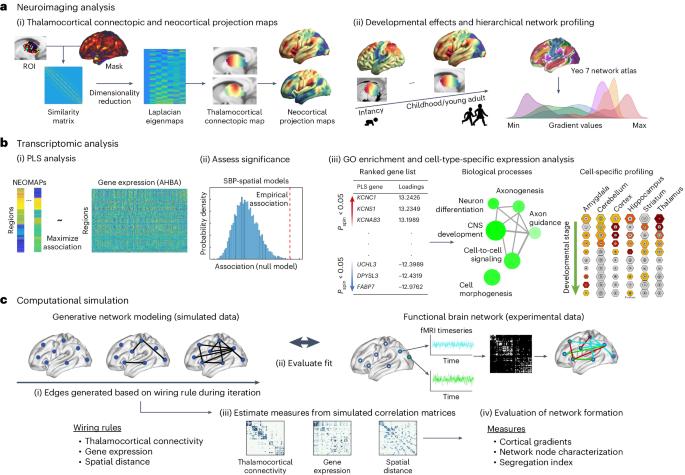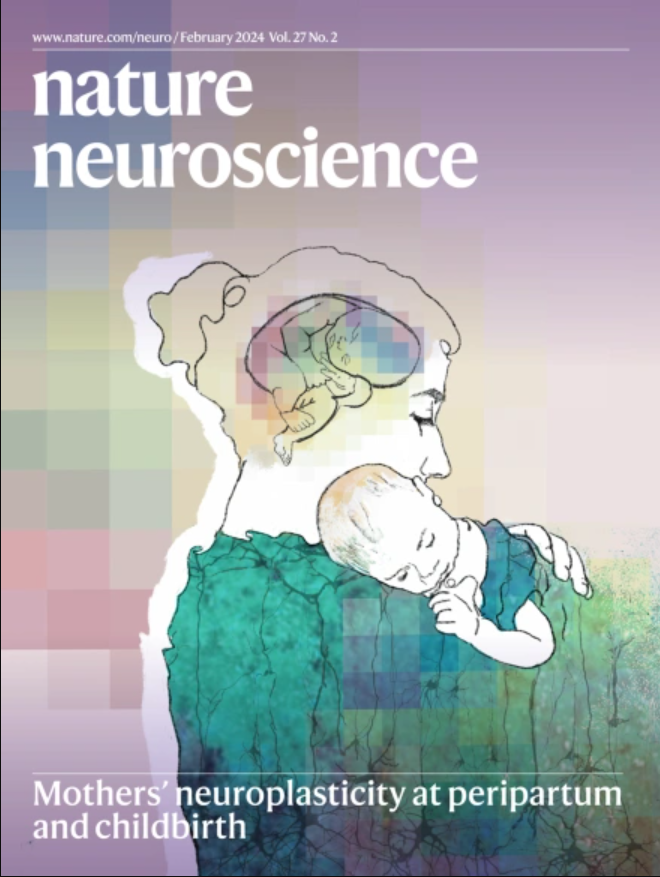丘脑皮层连接在皮层功能组织出现过程中的作用转变
IF 21.2
1区 医学
Q1 NEUROSCIENCES
引用次数: 0
摘要
皮层模式化原理是神经科学中一个长期存在的问题,但这一原理如何转化为人脑中的宏观功能特化在很大程度上仍是未知数。在这里,我们研究了静息态丘脑皮层连通性的年龄依赖性差异,以探讨其在生命早期大规模功能网络出现过程中的作用,研究主要采用横断面方法,但也有纵向方法。我们的研究表明,丘脑皮层在婴儿期的连通性反映了感觉运动网络的早期分化以及受基因影响的轴突投射。到了儿童期,这种模式发生了变化,与突出网络建立了连接,同时外部和内部导向的功能系统脱钩。利用生成网络模型进行的发育模拟证实了这些发现,证明丘脑连接有助于发育成熟大脑的关键特征,如功能分离和感觉-联想轴,尤其是在12-18岁期间。我们的研究表明,丘脑在发育过程中的功能特化中扮演着重要角色,这对研究内部和外部处理受损的情况具有潜在意义。本文章由计算机程序翻译,如有差异,请以英文原文为准。


A shifting role of thalamocortical connectivity in the emergence of cortical functional organization
The cortical patterning principle has been a long-standing question in neuroscience, yet how this translates to macroscale functional specialization in the human brain remains largely unknown. Here we examine age-dependent differences in resting-state thalamocortical connectivity to investigate its role in the emergence of large-scale functional networks during early life, using a primarily cross-sectional but also longitudinal approach. We show that thalamocortical connectivity during infancy reflects an early differentiation of sensorimotor networks and genetically influenced axonal projection. This pattern changes in childhood, when connectivity is established with the salience network, while decoupling externally and internally oriented functional systems. A developmental simulation using generative network models corroborated these findings, demonstrating that thalamic connectivity contributes to developing key features of the mature brain, such as functional segregation and the sensory-association axis, especially across 12–18 years of age. Our study suggests that the thalamus plays an important role in functional specialization during development, with potential implications for studying conditions with compromised internal and external processing. The thalamus is important for neocortical functional specialization. Here the authors show its shifting role in shaping large-scale functional organization during early life in humans, particularly in developing the internal–external cortical hierarchy.
求助全文
通过发布文献求助,成功后即可免费获取论文全文。
去求助
来源期刊

Nature neuroscience
医学-神经科学
CiteScore
38.60
自引率
1.20%
发文量
212
审稿时长
1 months
期刊介绍:
Nature Neuroscience, a multidisciplinary journal, publishes papers of the utmost quality and significance across all realms of neuroscience. The editors welcome contributions spanning molecular, cellular, systems, and cognitive neuroscience, along with psychophysics, computational modeling, and nervous system disorders. While no area is off-limits, studies offering fundamental insights into nervous system function receive priority.
The journal offers high visibility to both readers and authors, fostering interdisciplinary communication and accessibility to a broad audience. It maintains high standards of copy editing and production, rigorous peer review, rapid publication, and operates independently from academic societies and other vested interests.
In addition to primary research, Nature Neuroscience features news and views, reviews, editorials, commentaries, perspectives, book reviews, and correspondence, aiming to serve as the voice of the global neuroscience community.
 求助内容:
求助内容: 应助结果提醒方式:
应助结果提醒方式:


